In Budapest, the generally accepted principle is that the construction of a southern bridge is followed by that of a northern one. It seems this practice will remain. Preparations for the southern bridge to be built in line with Galvani Road are already in full swing, and the Budapest Transport Center (BKK) recently issued a tender for a study of the northern Aquincum Bridge. Naturally, it will be a long time before traffic can use the structure planned to stand next to the Újpest Rail Bridge, as preparations are only just beginning.
The idea of the bridge is not out of the blue, as it has been part of plans for Budapest for a long time. Where would the bridge stand, and what plans are needed? The public procurement documents state the following:
"The new bridge will create a connection between the No 10 national road and the M3 motorway (with 4.6 km of new urban roads) which does not increase traffic on existing elements of the road network. The planning area extends from Bécsi Road, national rail line no. 2, along the ring railway parallel to Marcheggi Bridge, to the urban section of M3. The route runs along the Ring Railway's northern section. The planning area includes all roads and junctions which connect to the planned new road and which must be modified to ensure the continuous flow of traffic."
In other words, the bridge would run roughly between Pók Street in Óbuda and Árpád Square in Újpest, north of the Újpest Rail Bridge, and crossing the northern part of Népsziget. However, BKK envisions not only a new bridge but the beginnings of a new boulevard in Budapest, thus planners have to begin planning at Bécsi Road and understand how the new road will reach the urban section of the M3 motorway.
The description of the bridge states that the crossing will be 700 metres, which, while not short by Hungarian standards, will not make it the longest bridge in Budapest. Of course, it can still break domestic records if designers create a bridge with a long span. (Currently, Pentele Bridge has the largest span in the country at 308 metres). However, planning has not reached this phase yet; the current tender is only for the first study and plan.

Side and top. view of the crossing drafted in the 1986 Bridge Plan, alongside the rail bridge (Source: A fővárosi közúti dunai átkelő kapacitások fejlesztése, Hídprogram, 1986. július)
Naturally, as mentioned above, the Aquincum Bridge is not a new idea, and plans for a bridge have been drawn up before.
The bridge was mentioned in the 1986 Bridge Plan, a document which examined the need for and possibilities of bridges on the Danube after the expansion of Árpád Bridge. The plan contained the following on the bridge:
"The planned 2 by 2 lane bridge (...) is planned as the extension of a two-directional outer ring road (Újpest Árpád Road, and the unbuilt road along the Ring Railway, which continues along Pók Street, Vonat Street and Aranyvölgy Street to reach Bécsi Road and the no. 10 national road)."
This is generally the same idea as that found in current plans. In the 1980s, a simple seven-span bridge was designed for the crossing, with 93-metre spans. This was the most affordable solution at the time.
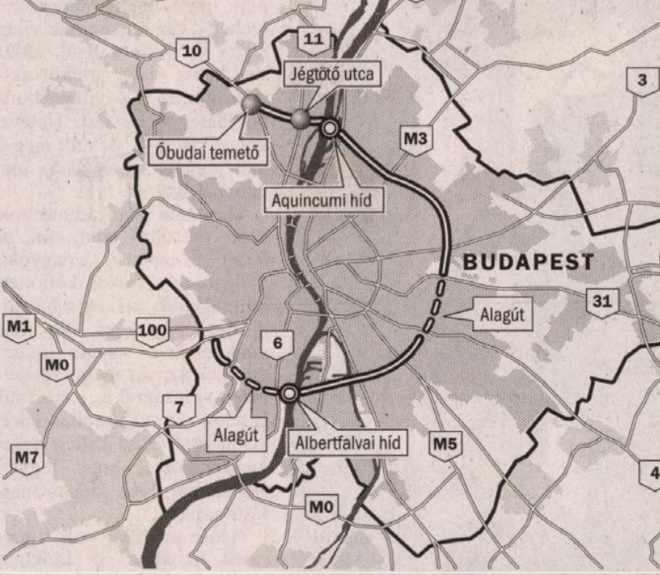
Plans for the outer ring road and the bridge in the 1990s (Source: Népszabadság, 4 November 2000)
In the second half of the 1990s, when Lágymányos Bridge and Deák Ferenc Bridge had been completed (which broke the pattern of a bridge in the south, a bridge in the north), the construction of a northern bridge was on the agenda. Aquincum Bridge was considered when planners had to choose between it and Megyeri Bridge.
At the time, traffic patterns in the capital called for the prioritising of Aquincum Bridge, as did the fact that the Újpest crossing was estimated to cost HUF 13-16 billion, instead of the 30 billion for the M0 bridge at the edge of the city (today's Megyeri Bridge). Several plans were drawn up for Aquincum Bridge in 1999. Népszava reported on these in its 11 November 1999 issue:
"Experts consider two of the several variants possible. According to plan A, the current rail bridge would remain in place but its columns would be reinforced, allowing for a completely new structure to be built on top of them, and the road bridge to cross slightly north of the rail briidge. Plan B calls for the construction of a new rail bridge 17 metres south of the current one, the pillars of which would support the new road bridge."
Főmterv even drew up some unique plans. One of these was an upper deck truss bridge and the other a remarkable cable bridge with a Y-shaped pillar.
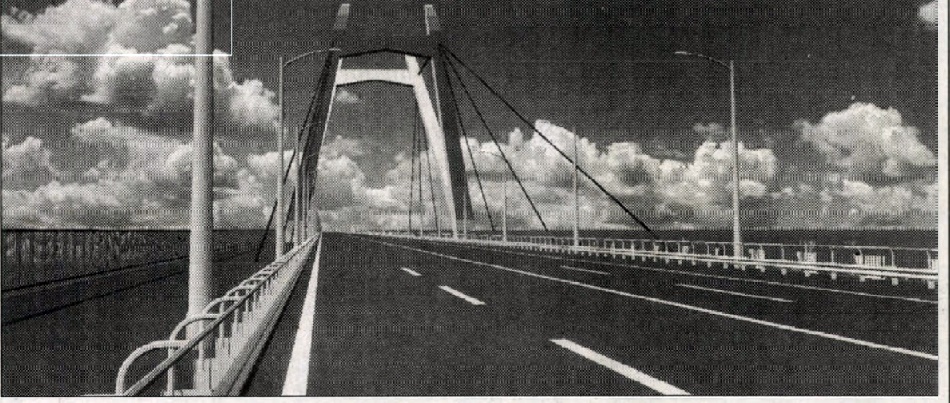
Visual design of the bridge (Source: Népszabadság, 29 February 2000)
However, the Council of Újpest was not happy about the plans, as they feared that the new bridge would lead to the entirety of northern Budapest traffic to run through the district's roads (all the vehicles that use Megyeri Bridge today). As a result, the council issued a resolution opposing its construction.

Side-view of the bridge (Source: Népszabadság, 29 February 2000)
As a result of the debate that unfolded in 1999, Megyeri Bridge was prioritised, and it continues to divert a massive amount of traffic from the city centre. However, it was already obvious that there was demand for a bridge between Megyeri Bridge and Árpád Bridge.
However, new plans differ from previous ones in that the rail bridge has since been rebuilt, and new plans call for a bridge to the north of the existing structure.
However, what is certain is that the new bridge will not be an urban motorway, but the first element of a new boulevard ring road. Nevertheless, only time will tell when traffic will be able to flow from Galvani Bridge to Aquincum Bridge freely.
Cover photo: View of the bridge planned by. Főmterv in 1999 (Source: Népszabadság, 4 November 2000)

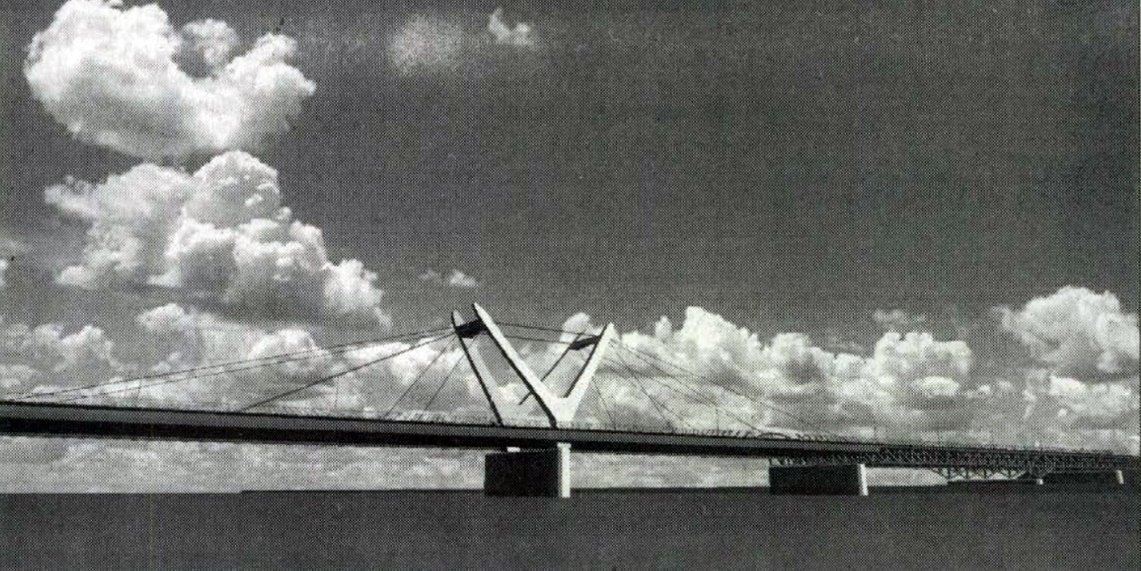

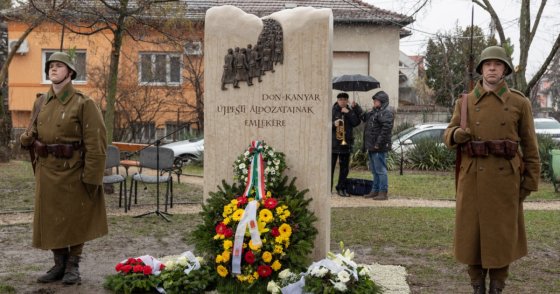
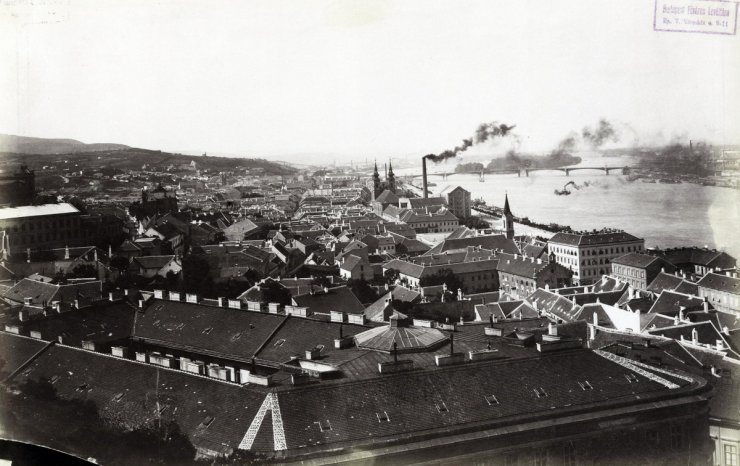
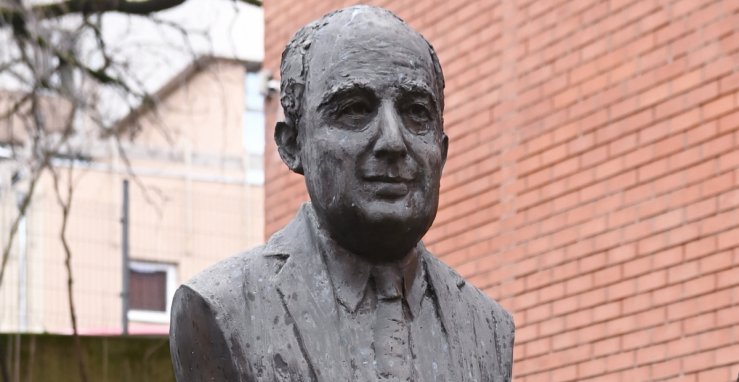

































Hozzászólások
Log in or register to comment!
Login Registration